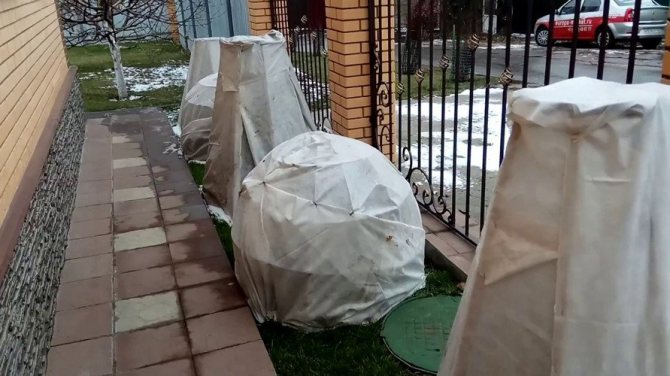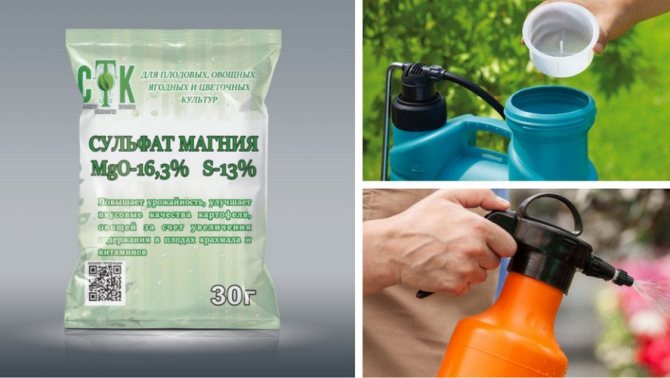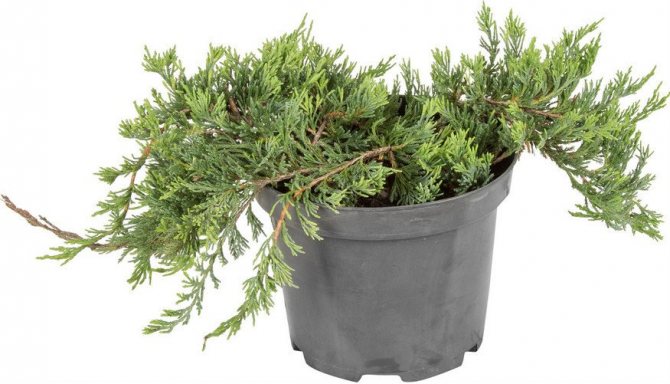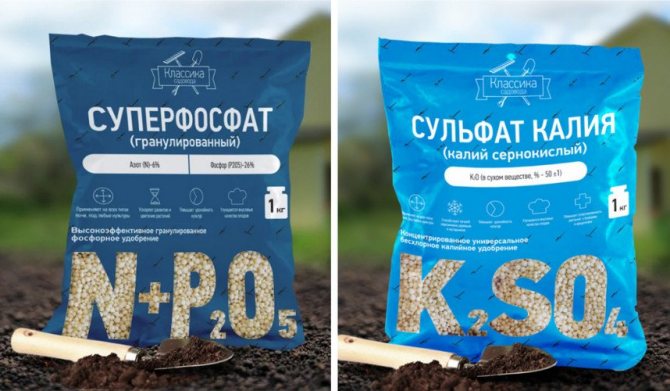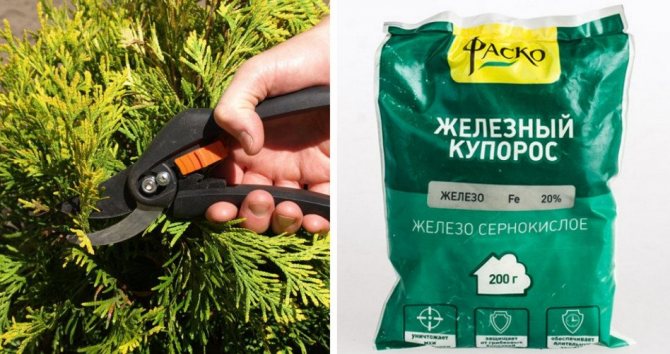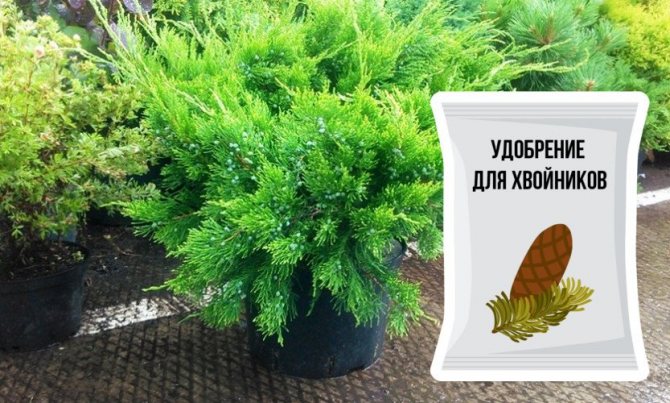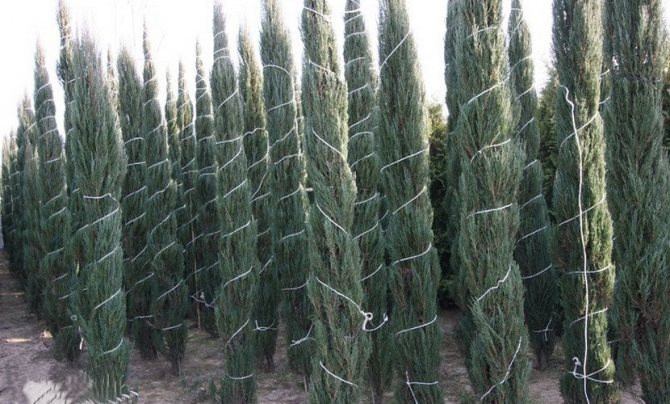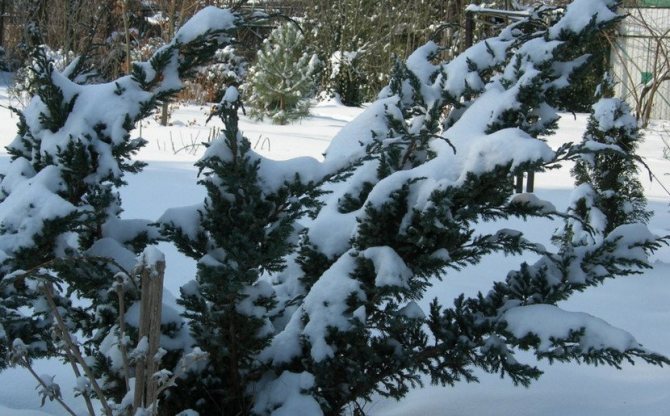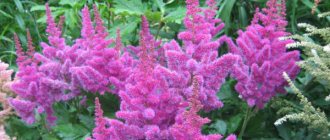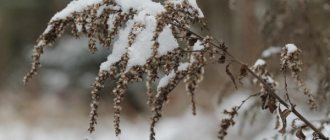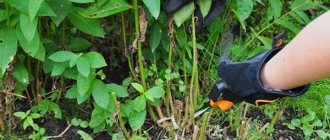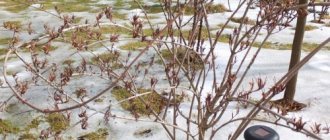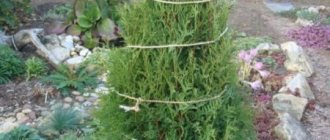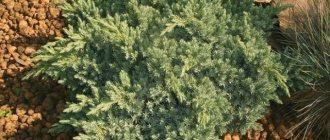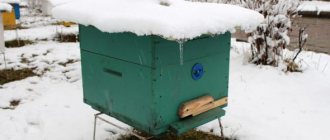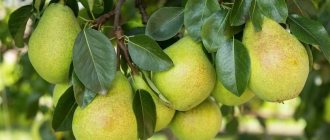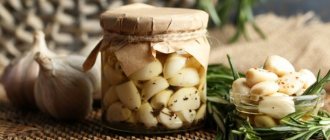Why you need to cover the juniper for the winter
Conifers rarely suffer from frost, juniper is no exception.... By spring, it may lose its decorative effect or even die for a number of other reasons:
- The weight of the precipitation. The volume of snow mass accumulated on the spreading crown can not only break fragile branches, but also turn the entire bush out of the ground along with the root system.

Under the weight of the snow, the juniper falls apart, the branches may break
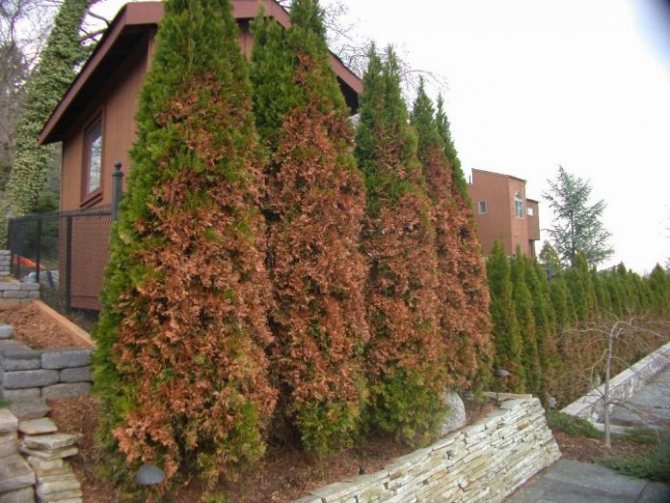

Sunburn marks appear on the south side of plants
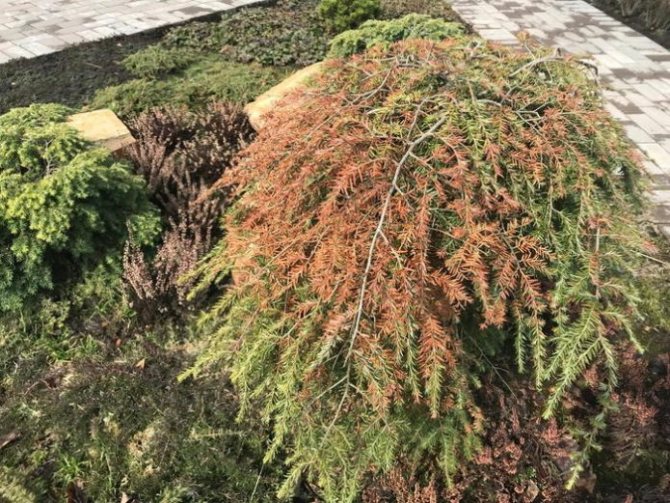

The piercing cold winter wind dries up the needles, as a result, they turn yellow, and the branches become fragile


Due to the lack of moisture, the juniper turns yellow
Young seedlings and plants that have not reached four years old must be sheltered for the winter, otherwise they may die. In the northern regions, they are sometimes even dug up, transplanted into pots and sent to winter in a cool place indoors.
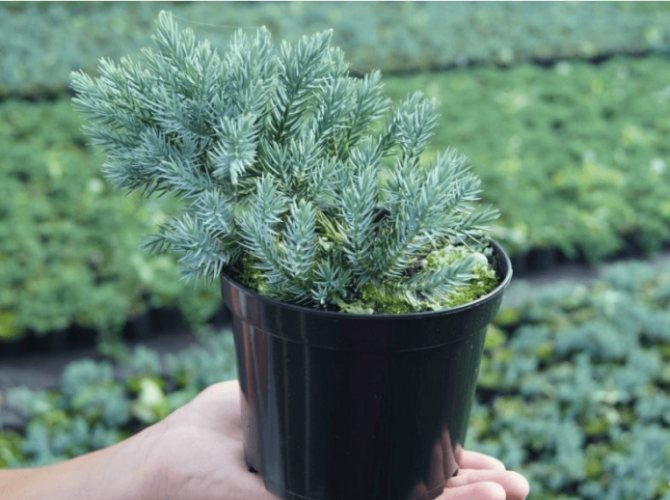

Sometimes very small conifers are dug up, transplanted into pots and kept indoors in winter so that they do not freeze
Adult specimens in areas with mild climatic conditions no longer harbor, as they are able to endure a hard time without loss. The exceptions are areas where in the winter months there is often a strong wind from the north and little snow. But in a harsh climate, even large bushes need to be insulated.
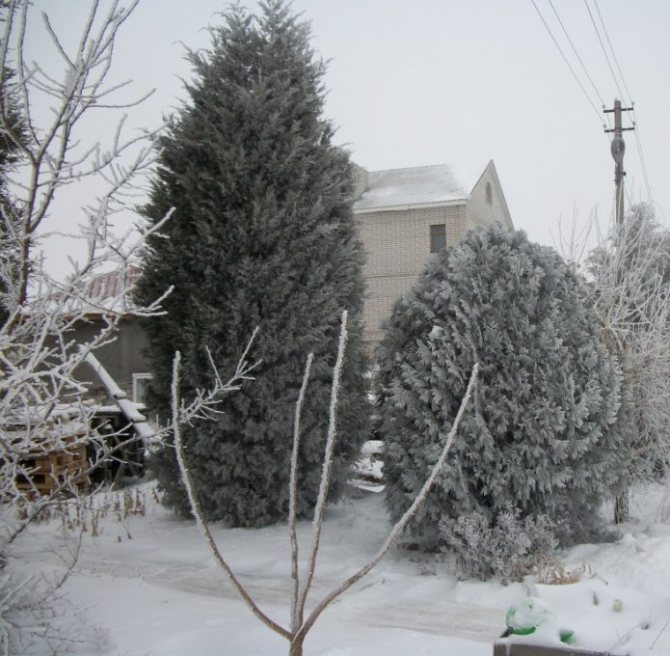

Large adult plants do not need to be insulated for the winter.
Some particularly delicate varieties of juniper will need to create a winter shelter even in the south, during warm winters.
In our city, low hedges are often made from juniper near public institutions (administrations, schools, shopping centers, etc.). Unfortunately, not every institution has a person whose duties include sheltering plants for the winter. The problem is aggravated by the fact that the snow is cleaned from the paths and thrown onto the same long-suffering coniferous bushes. In spring, having thawed out of a snowdrift, a juniper looks extremely unpresentable.


In the absence of shelter for the winter, the juniper may die.
Video: what the juniper is protected from in winter
Features of shelters for different types of plants and regions
Protection for conifers is created in various ways, depending on the type, size and winter hardiness of the plant:
- for tall columnar specimens, a frame is usually built in the shape of a cone, insulation is laid on top, which is fixed to the support with ropes or garden staples;
- to cover a tree with a spreading crown, the branches are neatly tied with twine, and if this is not possible (the crown is located horizontally), a canopy is built to protect the branches from heavy snowfall and icing;
- undersized and creeping decorative species (junipers, miniature pines, barberry) are covered with spruce branches or dry foliage, bending the branches to the ground.
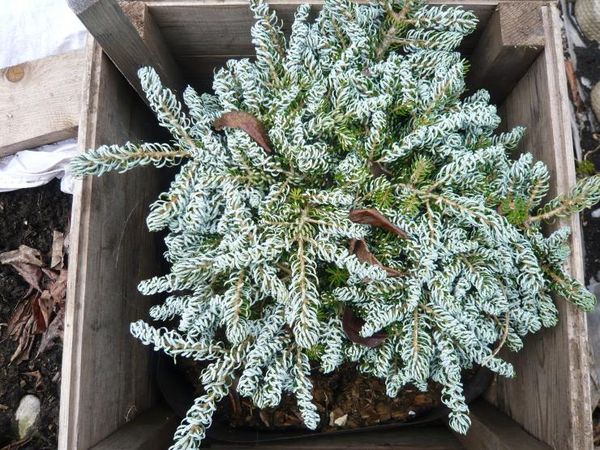

When constructing a shelter, the climate of the area must also be taken into account.So, in the northern regions, where winter is frosty and long, in addition to surface protection, it is necessary to increase the layer of mulch, and fill the inner space of the frame with hay or foliage.
For southern and temperate latitudes, another problem is relevant: already in February, the number of sunny days increases, the crown begins to heat up and burns appear on it. To prevent this from happening, the crown must be shaded by installing a protective mesh or burlap screen on the side from which the sun falls.
How to properly cover a juniper for the winter
When organizing a winter shelter for a juniper, use:
- Lapnik. Pine and spruce branches perfectly protect from burning sunlight, wind and snow, but at the same time they allow air and moisture to pass through... Small bushes can be covered with pine needles all the way to the very top. Large plants are protected by tying spruce branches to branches.
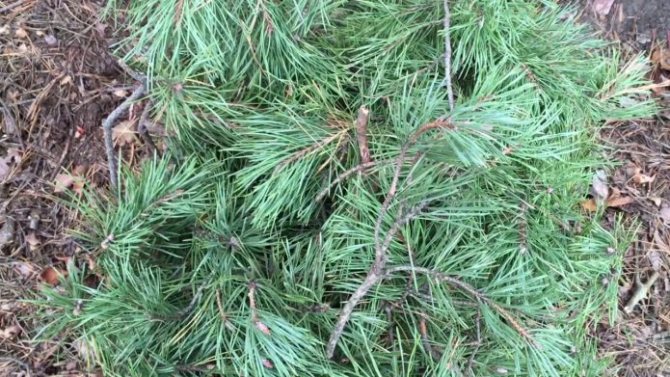

Small plants can be completely covered with spruce branches
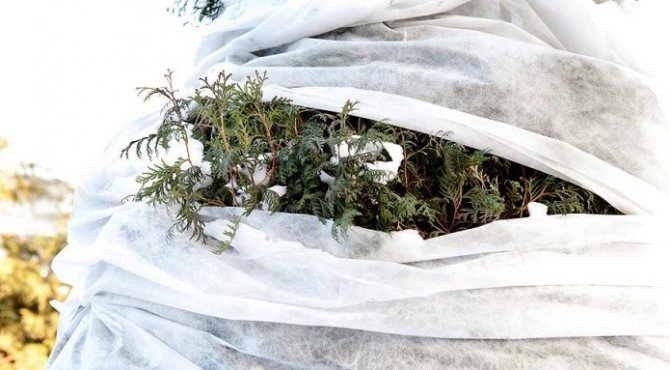

Any agromaterial that allows air to pass through can be used to shelter ephedra.
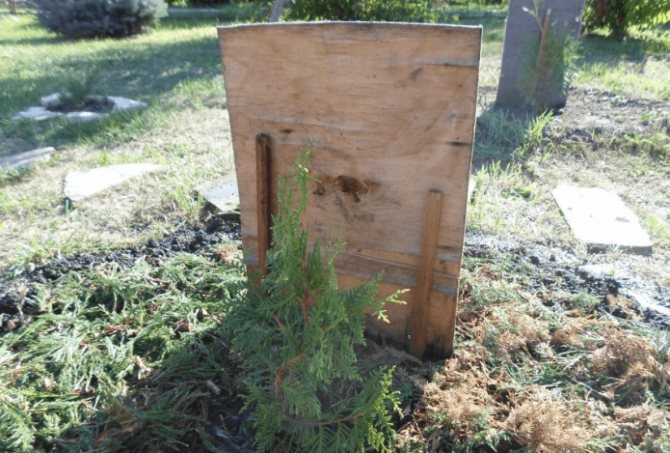

The sun shield is installed on the south side


Snow is considered the best insulation
Do not use a polyethylene film that does not allow air to pass through to cover the ephedra. In conditions of high humidity, fungi begin to multiply under the polyethylene, all this will lead to the death of the shrub.
Juniper shelter technology for the winter is as follows:
- The branches are pulled to the trunk and fixed with ropes. This procedure will prevent branches from breaking off.
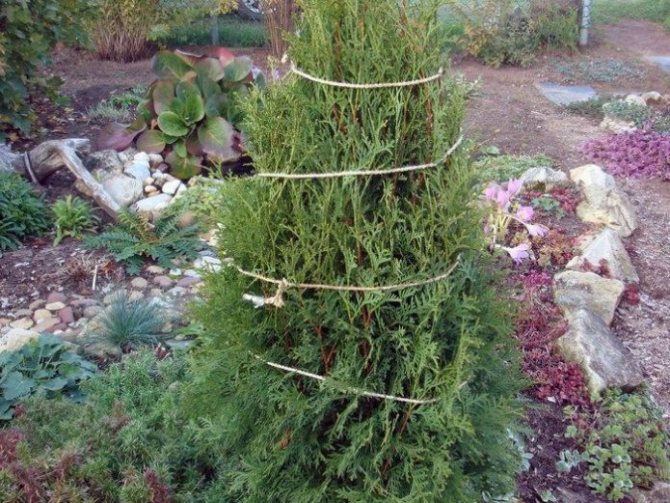

Branches with ropes pull to the trunk
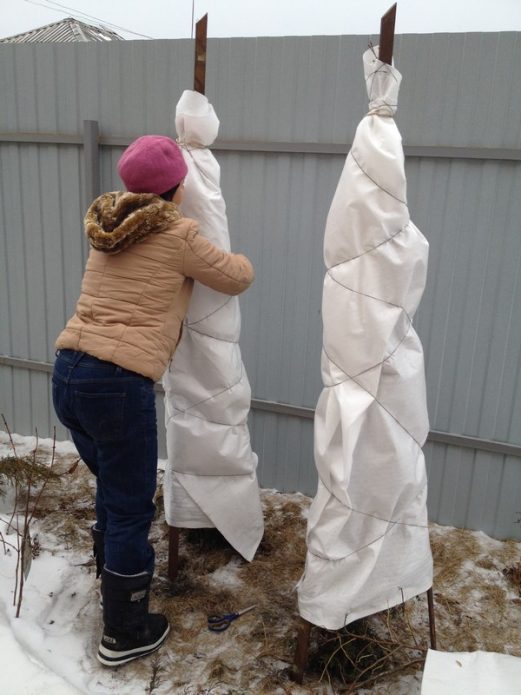

Juniper is wrapped with agromaterial
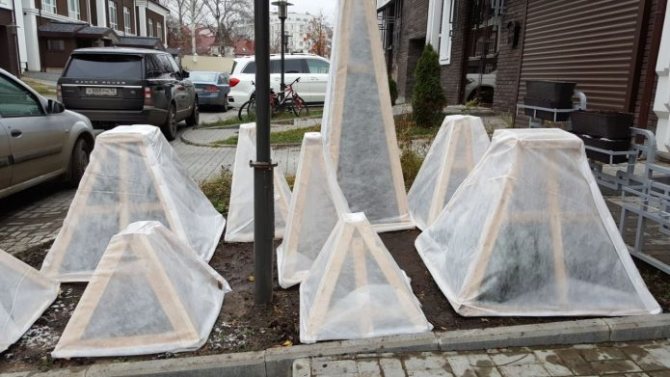

Small seedlings are protected by frame structures
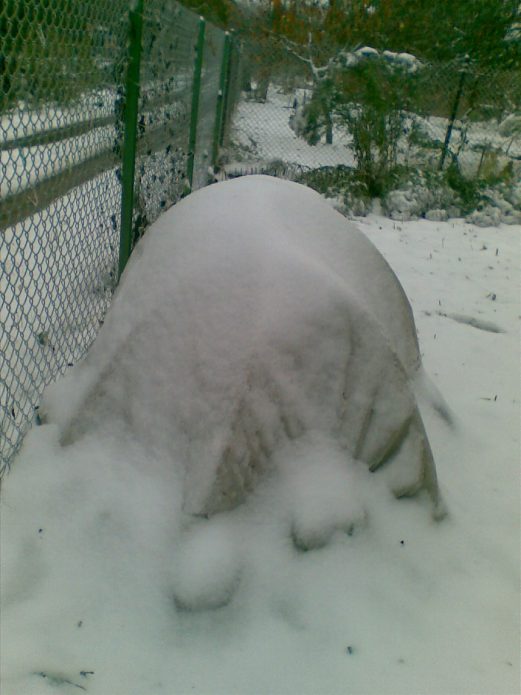

Then the structure can be covered with snow.
In the southern regions, conifers do not need to be insulated like this. It is enough to wrap the crown with any fabric (tulle, gauze, burlap, cotton cloth, etc.) and fasten it with a rope so that it does not blow off by the wind.
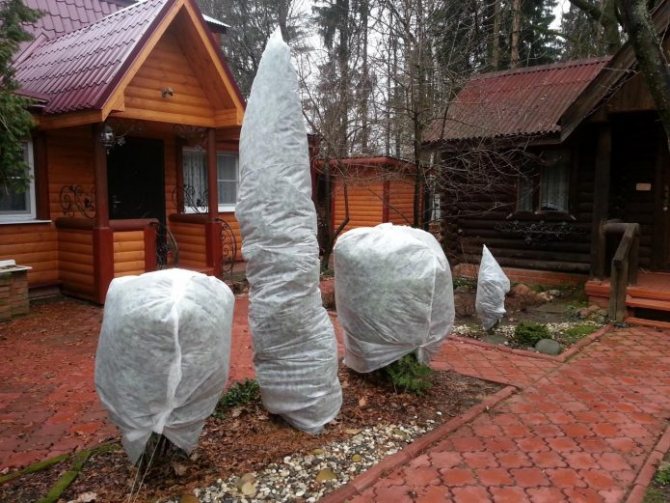

In the southern regions, conifers are simply wrapped with agromaterial
Video: choosing a material for shelter
Winter hazards
Juniper is a frost-resistant crop. It tolerates cold and frost normally, but under the influence of strong wind and scorching sun rays, it loses not only its decorative appearance, but can also die. The drying winter wind contributes to the rapid loss of life-giving liquid, as a result of which the branches become brittle, freeze and break off. That is why in the spring you can often find shrubs with broken off dry shoots and yellow-brown needles. Sunburn during sudden long thaws contributes to the opening of the stomata of the needles - the plant begins to breathe actively, the process of moisture evaporation is activated.


While the aboveground part is actively functioning, the roots in the unheated earth remain in a frozen state. The shrub does not have time to replenish the moisture supply and dries up. Ultraviolet light is another hazard. The sun's rays are reflected from the bright white snow and hit the tips of the needles, burning it. Also, young bushes may not withstand the thick snow stuck on the branches: the snow masses can not only break the branches, but also twist the root of the juniper.
Taking into account all possible dangers, you should take care of an adequate type of shelter that will help retain moisture, protect from wind and sun. One of the stages of preparing a juniper for winter is autumn care.
Do I need to cover. Does it make sense to shelter a strawberry?
Gardeners often argue about whether to cover strawberries, can snow be the best cover for them? Of course, it can, if on the site from year to year you grow old varieties and live in the center of Russia. But what about those who decided to acquire new, larger-fruited strawberry cultivars and who live in a region where even at the beginning of September in winter there may already be frosts? Of course, unambiguously, in these cases, you need to cover, and there are now many ways and opportunities for this, and they are available to everyone.
Why cover strawberries?
In principle, this is a reasonable question, because even new varieties can withstand up to thirty degrees of frost, provided they are covered with snow, of course, but in recent years, even in the northern regions, such an unpleasant phenomenon as provocative thaws has become more frequent. Imagine - the snow suddenly begins to melt, the plants are trying to wake up, mistaking a false spring for its beginning, and then again there are crackling frosts. Any flower bud can die from this, and even more so in strawberries. This is where the shelter will save, and it will protect reliably.
In addition, the areas are different: on some, snow accumulates well, while on others, at the first gust of wind, it is blown away, exposing the entire strawberry plantation at once. In such a situation, some of the varieties with "weak character" can freeze already at -9 degrees, and at -15 freeze completely. Strawberry shelter is a must here. If snow still attacks the site, then nothing bad will happen, and if the wind sweeps away the previously attacked snow, then the shelter will protect this site. Not everyone will want to plant curtain plants around the site to trap snow, so the use of a shelter is considered the most appropriate.
Desiccation is also the reason why the site needs to be covered. In the early stages of the winter period, when a strong and very cold wind sometimes rages, and there is still no trace of snow, many leaves, and sometimes flower buds of strawberries, perish from this cold wind. They literally dry up and look dead in the spring - here is just the right place for a shelter, which would definitely protect from this scourge.
Bulging is when frozen soil can literally push out freshly planted bushes, timely shelter will also help here, it will normalize the temperature of the soil, prevent it from freezing and there will be no bulging.
Freezing of the roots - during a long, protracted, snowless autumn, when the temperatures are very low, not only the aboveground part, but also the root system may suffer, so you should not postpone strawberries with shelter.
Autumn work front
The active preparation of the shrub for winter begins in the fall. Before the shelter of the juniper, the necessary agrotechnical measures are carried out: water-charging irrigation, pruning, treatment from pests and diseases.
Watering and spraying
The need for watering depends on the weather: if the fall is rainy, then the plant does not need additional moisture. Otherwise, if the hot summer has turned into a mild dry autumn, it is necessary to water the juniper once every 2 weeks. For a medium-sized bush, you will need about two ten-liter buckets of water. Immediately before the shelter, 4–5 buckets of water are poured into the near-trunk zone, which is better to loosen a little.
A layer of mulch will help trap moisture and provide ventilation. Spraying has a beneficial effect on the appearance and health of the plant. To do this, use settled water at room temperature. So that the shrub does not suffer from the sun's rays, which, together with moisture, can burn out the needles, the procedure is recommended to be carried out early in the morning or after sunset.
Autumn feeding of juniper
In order to better prepare the juniper for winter, to increase winter hardiness, it can be fed with autumn fertilizer, of course, if in the spring you did not give a complex fertilizer of a long (they also say "prolonged") action.
Worth knowing! Autumn fertilizer is a fertilizer with a high content of phosphorus and potassium (no nitrogen). Superphosphate is suitable as phosphoric, potassium sulfate (potassium sulfate).
If you don't want to bother, you can just buy ready-made fertilizer marked "autumn", and there is a special "Autumn fertilizer for conifers" on sale.


In addition, in the fall, it is highly recommended to carry out foliar feeding of juniper with magnesium, namely, spray the crown of the plant with a solution of magnesium sulfate (10 grams per 10 liters of water). It will be lovely prevention of browning and yellowing of needles due to sunburn due to the accumulation of magnesium by the plant.
Shelter by the rules
After carrying out the necessary agrotechnical measures in the last decade of November, the juniper is covered. The near-trunk zone is mulched with peat, the branches are tied around the trunk. The harness will help prevent damage to branches and freezing of the trunk. You can cover the juniper with:
- Snow. A snowdrift of loose snow falls on the connected structure. It is important to ensure that the snow does not freeze and damage parts of the plant during the shelter process.
- Lapnik. Pine needles are perfectly permeable to air and moisture and at the same time protects the plant from wind, snow and sunlight.
- Burlap or non-woven fabric (agrofibre, spunbond). Part of the bush is wrapped in a special material, leaving the bottom uncovered. The film will not work for this purpose - the plant can resist under it.
- Screen. It is usually installed on the sunny side to accumulate energy from the sun and warm the plant.
In regions with harsh winters, young animals are often dug up, placed in a container and brought into a cool room. Mature plants are insulated with a special covering material, wrapped several times, and covered with additional snow on top.
Typical mistakes
Ordinary summer residents and inexperienced gardeners often make mistakes that can become irreparable:
- Waterlogging. Abundant watering contributes to waterlogging of the soil and the development of the decay process. Root decay negatively affects the health of the entire plant.
- Improper feeding. Untimely or excessive fertilization of juniper with nitrogen-containing dressings promotes active growth of shoots, which prevents the plant's root system from accumulating the necessary nutrients for wintering.
- Improper pruning and processing of cuts with garden pitch. Excessive pruning can cause a tree to stop growing and developing. Garden varnish processing "preserves" the cut site and interferes with the emergence of young shoots.
- Use as a top dressing chicken manure or mullein.
Regional distinctive features
The need for shelter and the method depend on the climatic conditions for the growth of the plant. Juniper care in autumn and summer in different regions also has its own characteristics. In the areas of the Volga region, juniper must be protected primarily from sunburn. For this, the plant is loosely wrapped several times with cotton cloth, burlap, tulle so that the shrub breathes. In the middle lane, the plant is most often covered with spruce branches and snow is poured on top. In Siberia and the Urals, they are wrapped with a special covering material, young trees are dug up and brought into the room.
Using these tips, you can provide the juniper with proper care, and in the spring the bush will delight the eye with the brightness of the greenery.
Now it has become popular to grow evergreen trees on your backyard. They not only decorate the courtyard both in summer and in winter, but also create a kind of coziness in the backyard territory. The main point when caring for a juniper is preparing it for wintering. If some recommendations are followed, the shrub will successfully overwinter and in the spring it will cast rich greens, and not a yellow-brown tint.
Features of caring for juniper in the fall and in preparation for winter - general tips and tricks
Juniper does not have a capricious disposition. But if you do not follow certain rules, then a beautiful plant can wither, it will cease to have a decorative appearance, it will turn into a wild tree.
It is recommended to perform the following activities for the care of juniper in the autumn period of time:
- Watering - the shrub practically does not require watering.If it turned out to be a hot end of summer, smoothly turning into a velvet autumn, then irrigation with water should be carried out no more than 1 time in 2 weeks. In case of rainy and cool summers, additional watering is not required.
- Spraying - the only moment that the juniper favors. The event is best done before the first hours of the morning or after sunset. This is necessary so that the bright rays do not burn the delicate twigs.
- Fertilizers - dressings are applied mainly in the spring. But if the bush is lagging behind in growth or does not add young growth at all, it is necessary to apply mineral fertilizers in the form of nitroammofoska in the fall. But not more often than once every 4 weeks.
- Pruning - if the juniper was planted specifically for decorative purposes and its crown is constantly being formed, then in the autumn period, formative pruning is required. In addition, regardless of whether the figure is formed from a bush or the juniper grows with a natural crown, the removal of excess branches is mandatory. All dry, broken or damaged branches are cut.
- Shelter for the winter - in most cases, additional shelter is not required, the juniper tolerates even a strong decrease in temperature. The only moment so that the bush does not break off the branches, they are bent to the trunk and tied with twine.
Attention! Juniper requires little or no maintenance. The main thing is to monitor the general condition of the bush. If the plant withers and looks unhealthy, you need to look for the cause in improper care, including in preparation for winter.
Why does the winter sun harm conifers?
There is no definitive answer to this question. Most experts agree that bright sunlight in winter triggers photosynthesis in green needles. But since the earth is frozen and the root system does not work, all the water from the cells is consumed for photosynthesis. The needles dry up, turn brown, - the plant "burns". The withering effect of light is enhanced by frost. After a frosty, sunny winter, the plant can get significant burns and even die.
When and which conifers should be covered?
Be sure to cover conifers for the first two years after transplanting. Some sensitive species Tui and Juniper need shelter longer - up to four years. In the unusually frosty and sunny winter of 2009/2010, even large trees, growing for 10 years without shelter, suffered. Therefore, be guided by the weather conditions and, if necessary, shade adult conifers.
In central Russia, the sunny period begins in mid-late January, by this time, reliably cover the needles. Some gardeners cover their plants in late fall in preparation for winter. In the Yuzhny nursery, specialists shade thuja and junipers, exotic pines and spruces: Spruce conic, Spruce nidiformis, Weymouth pine, Mountain pine, Pine black…
What and how to cover conifers in winter?
Prepare conifers and shrubs before winter. In order to avoid breaks from a pile of snow, branches of vertically growing junipers and thujas are neatly tied. An ordinary twine is suitable for this.
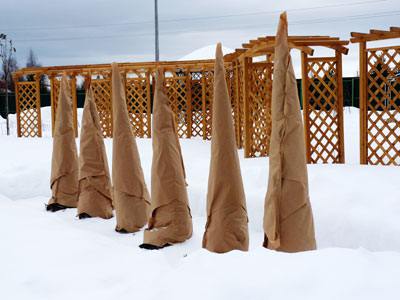

Kraft paper, burlap, nonwovens such as agrospan, lutrasil, spunbond can be used as a covering material. At home, you can even use newsprint and wrapping paper for shading. The only condition is that the material must "breathe", so films and plastic are unsuitable.
Snow around the plant is trampled or cleared. Now wrap the material around it, completely covering the needles. Fasten the seams with a stapler, leave a breathing gap at the top (on the shady side, so that the sun's rays do not fall on the needles). There is also a frame method of shelter - a frame is installed around the plant and covered with a cap sewn from agrospan. The shelter and the cap are secured with pegs.You can see the types of frame shelters on our website.
Adult, long-planted plants in some frosty and sunny winters are enough to shade with a fine mesh from the sunny side.
When is the cover removed?
Taking cover requires great care and several conditions. Firstly, it is necessary that the ground thaws no less than the depth of the bayonet and the root system of the plant begins to work. This happens around the end of April.
Secondly, the shelter is removed in cloudy weather, so that a sharp change in illumination and direct rays does not shock the needles. Ideal if you have studied the weather forecast in advance and opened the plants on the eve of an overcast period of 4-7 days. Then your conifers will be able to gradually adapt to the light regime and painlessly switch from hibernation to growth.
Watch our video on the shelter of thujas, conifers and fruit trees.
Juniper pruning in autumn
The first pruning can be done only 2-3 years after planting in open ground. This period will allow the young plant to grow stronger and gain weight. After this time, it will be possible to begin to form the crown according to the intended image.
Video: pruning Cossack juniper in autumn or spring
When to prune junipers - fall or spring
Junipers can be pruned during the spring months as well as before the first winter drops in temperature. In autumn, it is recommended to remove excess juniper shoots not earlier than September-October. But you should not delay until the first frost.
Important! The minimum temperature for pruning juniper in the fall is +4 C.
Lower air degrees adversely affect the healing of fresh cuts - they do not heal and are a smart option for wintering pests and diseases.
Juniper shaping, haircut
The nature gave the junipers a beautiful crown, so there is no need to cut them. An exception is made for those plants that have decided to form in some special way. For example, branches are cut out in sprawling and creeping junipers if they want to make them compact or restrain growth. And basically pruning consists in removing sick, broken, old or dried branches.
Only plants in a shorn hedge are cut 2-3 times per season, removing the side branches: the first time at the end of April, the second in the middle of summer, the last as needed, for example, if the green wall loses its shape.
Winter hazards
Juniper is a frost-resistant crop. It tolerates cold and frost normally, but under the influence of strong wind and scorching sun rays, it loses not only its decorative appearance, but can also die. The drying winter wind contributes to the rapid loss of life-giving liquid, as a result of which the branches become brittle, freeze and break off. That is why in the spring you can often find shrubs with broken off dry shoots and yellow-brown needles. Sunburn during sudden long thaws contributes to the opening of the stomata of the needles - the plant begins to breathe actively, the process of moisture evaporation is activated.
While the above-ground part is actively functioning, the roots in the unheated earth remain in a frozen state. The shrub does not have time to replenish the moisture supply and dries up. Ultraviolet light is another hazard. The sun's rays are reflected from the bright white snow and hit the tips of the needles, burning it. Also, young bushes may not withstand the thick snow stuck on the branches: the snow masses can not only break the branches, but also twist the root of the juniper.
Taking into account all possible dangers, you should take care of an adequate type of shelter that will help retain moisture, protect from wind and sun. One of the stages of preparing a juniper for winter is autumn care.
Autumn water-charging irrigation
In the case of a fall short of precipitation, continue to periodically water your junipers. At the end of the dacha season, be sure to carry out moisture-charging watering in order to saturate the entire root system of the ephedra with moisture. Then the earthen lump will freeze less, and the juniper will be warmer in winter. And in late autumn and early winter, if it is sunny, he will be able to safely evaporate moisture
Advice! If you have the opportunity, then in early spring or even at the end of winter (in February-March), it is also very desirable to carry out water-charging irrigation with hot water (but not boiling water) in order to saturate the root system of the ephedra at the most necessary moment - when there is increased evaporation. This will help prevent the needles from drying out and yellowing (sunburn).
Important! If on your site high groundwater (1.2-1 meters), then it is not recommended to do water-charging irrigation. But sprinkling of the crown can be done in early spring (i.e. deliver moisture directly to the needles).
Autumn work front
The active preparation of the shrub for winter begins in the fall. Before the shelter of the juniper, the necessary agrotechnical measures are carried out: water-charging irrigation, pruning, treatment from pests and diseases.
Watering and spraying
The need for watering depends on the weather: if the fall is rainy, then the plant does not need additional moisture. Otherwise, if the hot summer has turned into a mild dry autumn, it is necessary to water the juniper once every 2 weeks. For a medium-sized bush, you will need about two ten-liter buckets of water. Immediately before the shelter, 4–5 buckets of water are poured into the near-trunk zone, which is better to loosen a little.
A layer of mulch will help trap moisture and provide ventilation. Spraying has a beneficial effect on the appearance and health of the plant. To do this, use settled water at room temperature. So that the shrub does not suffer from the sun's rays, which, together with moisture, can burn out the needles, the procedure is recommended to be carried out early in the morning or after sunset.
Pruning


Autumn pruning takes place in mid-November. During it, dry and damaged branches are removed. If necessary, the formation of the crown of the bush takes place in the process. However, when pruning, you should be careful: the shoots grow back slowly. It is impossible to remove too much of the shrub at a time, it will not have time to recover before winter.
Protective measures
The most ardent enemies of juniper are rust and aphids. Dust and spider mites can be just as dangerous. Treatment of the shrub with the drug "Abiga-Peak" will help prevent the development of the disease and cure the plant. For a full result, you will need 4 spraying at intervals of 10 days. Insecticidal preparations "Fitoverm" and "Fufanon" perfectly cope with pests.
Juniper protection from diseases and pests
Rust brings junipers the most trouble. The disease is signaled by the appearance of swellings with yellowish gelatinous or mucous secretions of fungi. Sick branches are removed, and the bush is sprayed with a solution of the drug Abiga-peak (50 g per 10 l of water), 4 times with an interval of 10 days.
Of the pests, various types of aphids are especially annoying. Fitoverm is used against it (20 g per 10 l of water): double treatment with an interval of 10-14 days. Against the juniper miner moth, a double, after 10-14 days, spraying with decis pro (0.5 g per 10 l of water) is effective. They fight spider mites using the drug fufanon (15 ml per 10 liters of water). They also treat a bush that has been badly damaged by the sawfly. You can find out about the appearance of this pest by discovering that the branches have become fragile, and inside are hollow.
Unfortunately, the Cossack juniper is a carrier of rust, so it cannot be planted near fruit trees and berry bushes.
Sheltering conifers for the winter is a very responsible process of plant protection, so we recommend that you study the video and other information provided in this article. Already in the fall, when the days are either sunny or rainy, you need to get busy. Conifers during this period are not yet sufficiently strong, which means they can be severely affected by strong winds or the first frosts. It is the first wintering that is quite dangerous for these plants. There are several ways to hide.
So, if your coniferous tree grows in a tub, then you should definitely bring it into a house or a room where a constant temperature is maintained. However, the size of the plants can change your plans - if the trees simply do not enter the doors, you will have to think about hiding the coniferous beauties right on the street.
As an effective and inexpensive covering material, you can use spruce branches, which are laid in the form of a hut, closing the plant from top to bottom.
... By the way, this affordable heat-insulating material can be used to keep other plants and plants from winter frosts.
What if you can't get spruce branches? Then you can make a covering material in the form of homemade pillows stuffed with sawdust, straw or various rags. If the frosts in your area are very strong, we advise you to use everything in the complex for plant protection - both spruce branches and bags. All of your multi-layer protection should be well reinforced so that nothing will fly apart in strong winds. To do this, spruce branches are fixed with staples or simply sprinkled with earth below, and the pillows are tied with twine.
If one-year-old seedlings have already been planted in open ground by the fall, then here it is necessary to approach the shelter of plants for the winter somewhat differently. First, the root system should be insulated. To do this, you can pour a large layer of sawdust or peat on top of the soil in the area of the trunk circle. Also, for these purposes, the above spruce spruce branches, laid directly on the ground or just coniferous needles, are suitable for these purposes.
The branches should be tied with twine so that they are pressed against the trunk. Firstly, then it will be much easier to wrap the plant with heat-insulating material, and secondly, this will protect the branches from wind and heavy snow.
Towards spring, try to cover your ephedra and sunburn. In the spring, the soil has not yet completely froze, the circulation of the juice has not been restored - in these conditions, direct sunlight dries the needles.
Signs of burns are brown or yellow. So that the trees do not suffer, you should gradually open them to the sunlight, increasing the duration every day. However, you cannot keep them closed - the needles can rot.
In the end, it will not be superfluous to add that in some regions adult conifers may not be sheltered - for example, in central Russia, it is possible not to protect spruce, which is 4 years old or more, from frost, adult larches and junipers. Pines, yews, cedars, thuja and fir can also be winter-hardy in adulthood. But it is imperative to cover young seedlings of these plants.
It would seem that conifers feel great growing in central Russia, and they are not afraid of any winters. Indeed, many of the conifers are unpretentious, but even local pines and spruces can not stand all the whims of winter, not to mention exotic plant species. Therefore, you need to worry about how to help your plants survive the frosty time well and preserve their beauty. Each type of coniferous plant needs an individual approach, but there are some common points. So, let's open a couple of secrets on how to prepare conifers for winter.
Shelter by the rules
After carrying out the necessary agrotechnical measures in the last decade of November, the juniper is covered. The near-trunk zone is mulched with peat, the branches are tied around the trunk. The harness will help prevent damage to branches and freezing of the trunk.You can cover the juniper with:
- Snow. A snowdrift of loose snow falls on the connected structure. It is important to ensure that the snow does not freeze and damage parts of the plant during the shelter process.
- Lapnik. Pine needles are perfectly permeable to air and moisture and at the same time protects the plant from wind, snow and sunlight.
- Burlap or non-woven fabric (agrofibre, spunbond). Part of the bush is wrapped in a special material, leaving the bottom uncovered. The film will not work for this purpose - the plant can resist under it.
- Screen. It is usually installed on the sunny side to accumulate the energy of the sun and warm the plant.
In regions with harsh winters, young animals are often dug up, placed in a container and brought into a cool room. Mature plants are insulated with a special covering material, wrapped several times, and covered with additional snow on top.
Typical mistakes
Ordinary summer residents and inexperienced gardeners often make mistakes that can become irreparable:
- Waterlogging. Abundant watering contributes to waterlogging of the soil and the development of the decay process. Root decay negatively affects the health of the entire plant.
- Improper feeding. Untimely or excessive fertilization of juniper with nitrogen-containing dressings promotes active growth of shoots, which prevents the plant's root system from accumulating the necessary nutrients for wintering.
- Improper pruning and processing of cuts with garden pitch. Excessive pruning can cause a tree to stop growing and developing. Garden varnish processing "preserves" the cut site and interferes with the emergence of young shoots.
- Use as a top dressing chicken manure or mullein.
Regional distinctive features
The need for shelter and the method depend on the climatic conditions for the growth of the plant. Juniper care in autumn and summer in different regions also has its own characteristics. In the areas of the Volga region, juniper must be protected primarily from sunburn. To do this, the plant is loosely wrapped several times with cotton cloth, burlap, tulle so that the shrub breathes. In the middle lane, the plant is most often covered with spruce branches and snow is poured on top. In Siberia and the Urals, they are wrapped with a special covering material, young trees are dug up and brought into the room.
Using these tips, you can provide the juniper with proper care, and in the spring the bush will delight the eye with the brightness of the greenery.
Burn protection
Cypress trees, columnar junipers, some varieties of thuja and Canadian spruce must be protected from sunburn. For this, the conifers are sheltered for the winter with special material.
For such a purpose, the following is well suited:
- sackcloth;
- shading mesh;
- woven propylene panels.
Having chosen a suitable material, it must be applied to the plant and tied with twine, without tightening the branches too much. It is not necessary to "brick up" the entire crown to the last branch. If "windows" remain, that's even good, since there will be access to fresh air. If the plant is very large, then just shade its south side. For lovers of dwarf conifers, it will be useful.
Autumn care tips
It is worth taking care of how the juniper overwinters in late October - early November. During this period, frosts have not yet been established, so it's time to take care of such care activities as watering, fertilizing, pruning and sheltering evergreen shrubs.


Watering
It is worth noting that the juniper is a shrub that does not need watering. If even in the last summer days there is a high temperature, you need to irrigate the plant with water no more than 1 time in 14 days. If the summer season is cool and rich in rains, additional watering is not required.
The only thing the juniper shrub is "for" is spraying.It is better to carry it out after sunset, or, conversely, early in the morning, while the sun's rays are not so active. This way the branches of the plant will not burn.
Fertilizer
Various fertilizers are applied with the onset of spring. If it is noticeable that the juniper bush does not add young growth or slows down its growth, mineral fertilizers are applied in the fall. As a rule, this is a nitroammophoska, which is fed to the plant no more than 1 time per month.
It is also worth paying attention to the fact that you need to control the condition of the juniper after pruning it in the autumn. It is after this event that it is better to apply mineral fertilizers. Adaptogen stimulants are ideal for boosting plant immunity. The substances strengthen the tree and help to activate the root system of the juniper.
Pruning
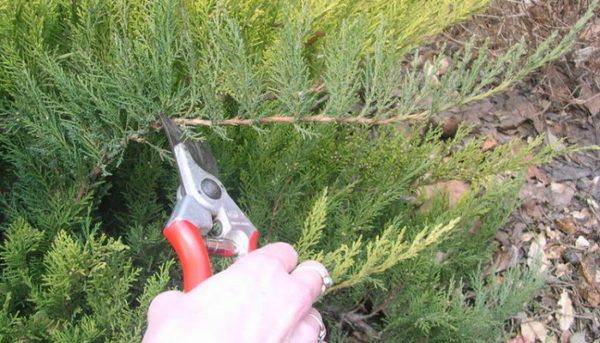

In order to properly prune your shrub, it is important not to ignore the following tips:
- the event is carried out exclusively with sharpened and disinfected instruments;
- initially cut off the affected and dried branches, as well as those on which traces of pathogenic bacteria are obvious;
- you also need to remove young shoots that thicken the crown or grow inward;
- during the year the shrub adds about 10%, so it is recommended to cut off 15–20% of the mass that has grown over the past year;
- the gardener must definitely use protective gloves during pruning - the shrub is poisonous, so if the secreted juice gets in, you can burn your hands.
When pruning, the gardener should not neglect the rule: less is better than more. A juniper shrub can completely stop growing if the summer resident accidentally and thoughtlessly cuts off the growth buds. It is important to adhere to the following pattern when performing trimming:
- The kidney slope should be 45 °. A wound in the bush will take too long to heal if pruning is done lower than required.
- By cutting off the kidney incorrectly, it can dry out completely or give minimal growth.
- If the shoot is directed upwards, it must be cut off so that the outer bud is at the extreme.
- If the branch is omitted, it is worth pruning the other way around - to the inner bud.
- When removing branches, it is important to leave a small stump, the height of which should not exceed 2 cm.
Juniper conic. Konik spruce: planting and care in the open field
- 1 Location
- 2 Landing
- 3 Care
- 4 Pests and diseases
Conic spruce is a miniature coniferous tree that is a dwarf variety of Canadian spruce.
Due to its compact size and decorativeness, this mini-Christmas tree is successfully used in landscape design for coniferous gardening of small areas, the area of which does not allow for large trees.
Outwardly, the tree looks extremely attractive - the lush crown has the shape of a cone, the length of the soft gray-green needles ranges from 6 to 10 mm.
Growing in diameter up to 75–80 cm, Konica grows very slowly in height, adding about 6–8 cm per year.
As a rule, active growth is observed in the first 10 years of a tree's life; over time, growth slows down, and the height of an adult plant rarely exceeds 180-250 cm.
The root system of the Christmas tree is located in the upper layer of the soil, which greatly facilitates its transplant. In addition, the baby is undemanding in care and is highly frost-resistant. To ensure a comfortable stay of a tree in a garden plot, suitable conditions should be created for it.
Location
For planting Koniki, fertile loamy soils are suitable, which retain moisture well, and the acidity of the soil in this case does not matter, however, the tree reacts extremely painfully to excessive alkalization of the tree.
As a "place of residence" for a miniature beauty, a shady place protected from the wind should be determined, while avoiding hills and swampy lowlands.Does not build to plant Konika in places with groundwater occurrence close to the surface.
Dwarf spruce looks great both in single planting and in a group. Thuja, juniper and other conifers are suitable as adjacent breeds for Konica.
In combination with them, miniature Christmas trees are used to create "dense" coniferous corners on the site. Geometric group plantings of mini-spruces in the design of a trimmed lawn look very impressive.
A single baby Christmas tree will decorate the front lawn, and during the winter holidays it will perfectly cope with the role of a Christmas tree.
How to cover a plant for the winter
To create good conditions with which the juniper overwinters, the shrub is covered in the last autumn days. Caring for a juniper in the fall consists not only in pruning, but also in covering the plant. In this case, apply:
- Snow. It is considered the best and most effective way. The structure, tied with ropes, is covered with a snowdrift. In order not to injure the trunk and branches of the bush, you need to use a crumbly mass.
- Pine needles. The heaped spruce branches can completely cover the small plant. If the shrub is large, spruce branches are knitted to the branches.
- Agrofibre or burlap. Such material is able to protect the entire crown, and the bottom of the shrub remains open.
- Screen. Installed on the side that receives the most sunlight. The plant is heated by reflecting the sun off the screen.

